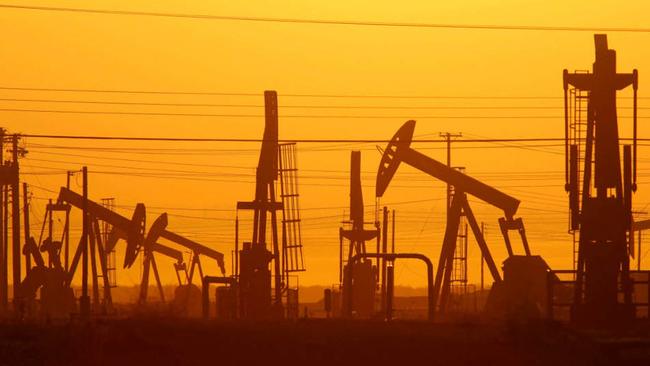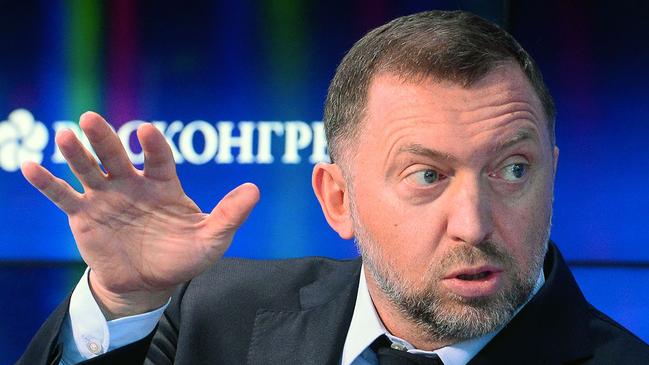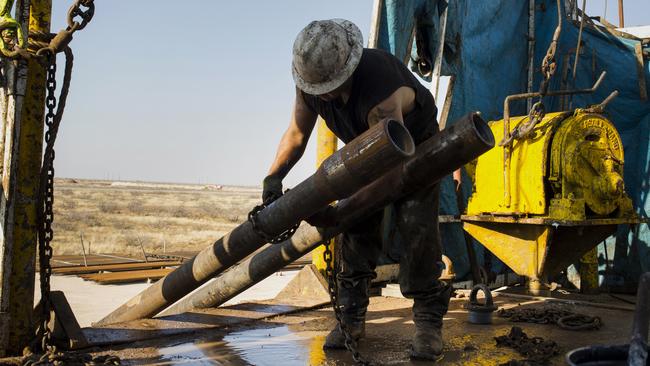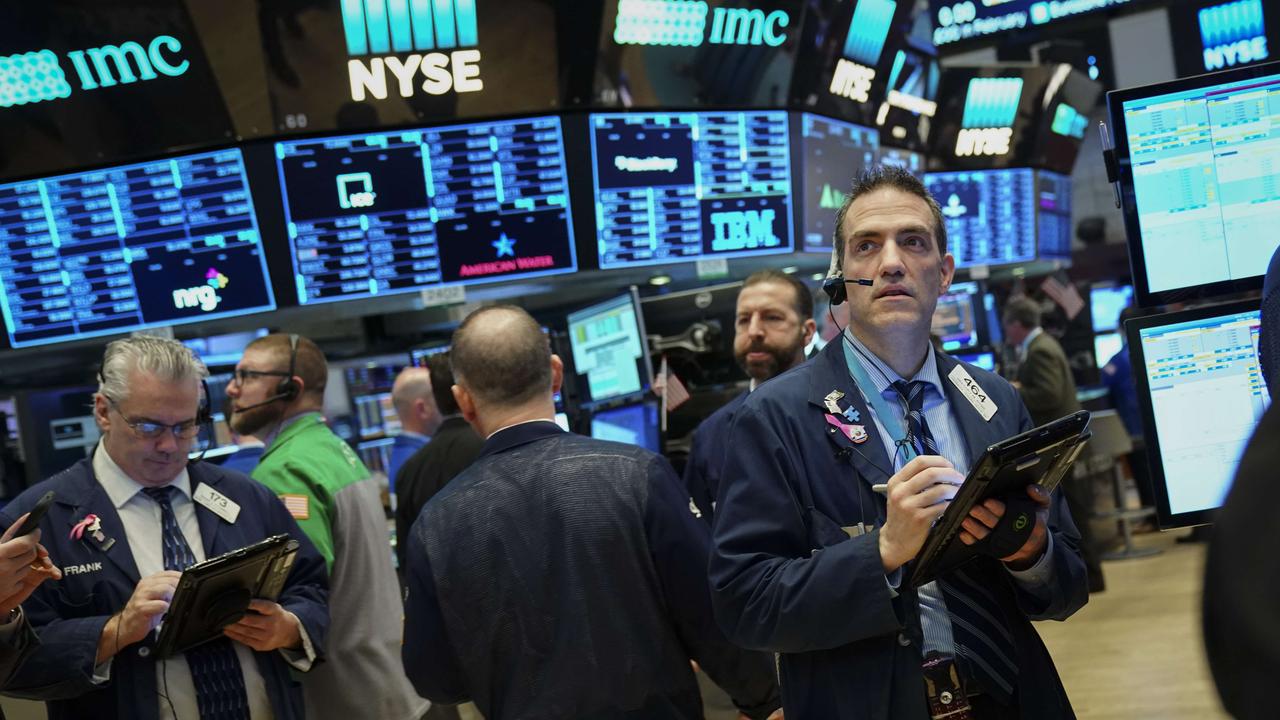Perfect storm brewing for oil market

Over the past fortnight the oil price has surged nearly 7.5 per cent to just over $US72 a barrel, its highest level since late 2014 when the price was imploding in response to OPEC’s misjudged attempt to curb the growth in the US shale oil sector.
There are a number of strands to the explanation for why the price has been spiking, most of them quite unsettling in terms of their implications for global stability. Those more recent developments are, however, layering over the improving fundamentals of the sector as the OPEC-led production limits have finally started to bite and excess global inventories have finally been substantially cleared.
The $US5 a barrel bounce in the price in the past two weeks can be attributed to a confluence of factors.
The slight recession in what had been elevated and escalating trade tensions between the US and China, after China appeared to offer some concessions, may have been a positive factor. Donald Trump seized on them as proof his tough talk on tariffs had succeeded, even if there wasn’t that much new within the measures China was offering.
Of probably greater impact have been events in the Middle East, where the US response to the alleged chemical attacks on Syrian citizens led Trump to tweet overnight that a US missile attack on Russian and Iranian-backed forces — “nice and new and smart’’ missiles — was coming.
With the Russians threatening to shoot down any US missiles — and the source of any launches — that threaten the Russian forces supporting the government of Syrian president Bashar al-Assad, the potential for conflict between the US and Russia has been heightened.
In fact the Middle East more broadly is nearing several flashpoints. Wednesday’s ballistic missile attacks on Saudi Arabia by Yemen’s Iranian-backed Houthi rebels, which targeted the Saudi capital Riyadh as well as oil infrastructure, represent an escalation of the tensions between Iran and the Saudis and their allies — with some logistical and intelligence support from the US — in the war in Yemen.
Trump, who has described the 2015 deal struck by the previous Obama administration to limit Iran’s nuclear program in return for the lifting of sanctions as “the worst deal ever negotiated”, has threatened to reintroduce the sanctions unless the terms of the agreement are significantly renegotiated.
The next opportunity for the US to extend or withdraw its commitment to the deal will occur next month. The Europeans, Russia and China are parties to the 2015 agreement and the Europeans are trying desperately to find a compromise that satisfies the US without inciting Iran to resume the build-up of its nuclear program.
The other recent factor at play relates to the announcement this week of US sanctions on some Russian oligarchs, government officials and state-owned companies. Those sanctions were centred on the interests of Oleg Deripaska and his Rusal aluminium business, one of the world’s largest producers. Rusal, it appears, may have to be bailed out by the Russian government.

While the biggest impact of the sanctions so far has been on aluminium, where it has caused some turmoil and a price rise, there has been some bemusement that only a handful of the oligarchs and their enterprises were targeted.
Most notably, while individual oligarchs in the energy sector have been sanctioned, the bigger energy companies themselves have so far been left alone.
Sanctions on Gazprom, which supplies more than a third of the eurozone’s gas requirements, or Rosneft, a major oil producer, would have a far greater impact on Russia given its economy’s reliance on energy exports.
It is, perhaps, Europe’s reliance on Russian energy that has stayed the US hand but the potential for the sanctions — imposed in response to Russia’s “worldwide malign activity’’ – to be extended is unsettling commodity markets more generally, including the market for oil.
A more conventional influence on the price is the economic crisis in Venezuela, one of the world’s largest oil exporters, where the impact of the economic distress has seen its output fall more than 25 per cent in the past two years. It’s still falling.
The threats to supply from the confluence of geopolitical events have been developing even as the fundamentals of the sector have finally stabilised, with global inventories now only marginally above their five-year average. That’s despite surging US shale production, where activity and output have responded to the higher prices by rising to record levels of more than 10 million barrels a day.

In different circumstances the Saudi-led OPEC might have responded to the rise in US output, and the decline in inventories, by raising the ceilings on production that the OPEC members and some key non-OPEC producers (including Russia and Venezuela) voluntarily signed up to.
If the price remains above $US70 a barrel there’s little doubt the level of drilling and production in the US onshore basins will continue to increase.
The Saudis, however, have a particular reason for wanting higher oil prices and therefore for maintaining the production limits.
Quite apart from needing the revenue from higher prices to fund an ambitious domestic economic reform program, and the war in Yemen, the Saudis plan to float their state-owned energy colossus, Aramco, next year.
While the plan is to sell down only a small proportion of the company to external investors — around five per cent — Aramco’s massive oil reserves would be worth a lot more at $US70-plus a barrel of oil than they were when oil was trading below $US50 a barrel less than a year ago.
Aramco’s value has been estimated at up to $US2 trillion, so the impact of the oil price on the size of the proceeds raised through the initial selldown and any subsequent sales will obviously involve very material sums.
It is conceivable that the trade tensions between the US and China, the potential for conflict in the proxy wars in the Middle East and the threat to the deal with Iran can all be defused. It’s also quite feasible that there will be no extension of the sanctions on Russian companies because of the impacts on US allies.
As long as the production limits OPEC and others have agreed to hold — at the moment, thanks to Venezuela, they may well be significantly over-achieved — there is an effective floor under the oil price.
Where that floor settles — and how significant an impact it might have on economies that have become accustomed to relatively low oil and gasoline prices after the implosion in the prices in 2014 — may well be determined by the OPEC-led producers willingness to maintain the limits and the extent of the US onshore oil response to the higher prices. Those latter two uncertainties are, of course, related.




What might be described as a “perfect storm’’ developing in global trade and international relations is supercharging the rate of change occurring in the oil market, which is good for producers but not necessarily for the global economy.